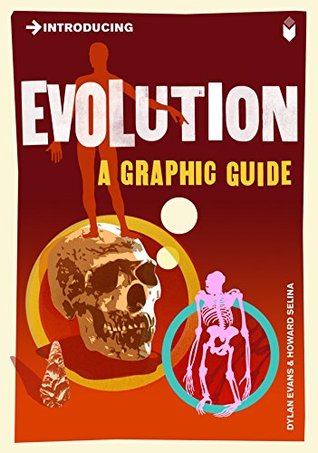More on this book
Kindle Notes & Highlights
by
Dylan Evans
Read between
February 22 - July 17, 2020
The American philosopher, Daniel Dennett (b. 1942), has described the theory of evolution as a kind of “universal acid”.
Like universal acid, the theory of evolution eats through just about every traditional religious
idea.
The theory of evolution states that species can change. One species can give rise to another.
When Bishop Ussher (1581–1656) added up all the figures in the Bible, he calculated that the world was created in 4004 BC.
If the Bible was literally true, the earth could only
be 6,000 yea...
This highlight has been truncated due to consecutive passage length restrictions.
The world is almost a million times older than Bishop Ussher thought. Current estimates put the age of the earth at around 4.5 billion years.
You can accept the idea that some species have become extinct without
believing that one species can change into another. However, when you compare the various fossils that have been found, it is immediately obvious that they form patterns.
Many fossils can be arranged in sequences, in which there is a more or ...
This highlight has been truncated due to consecutive passage length restrictions.
connecting an earlier fossil with...
This highlight has been truncated due to consecutive passage length restrictions.
Furthermore, carbon dating shows that the sequence of fossils as reconstructed by their appearance is the same as their sequence in time. The fossil at
the beginning of the chain is older than the next one, which is older than the next one, and so on. If all species had been created independently, we should not expect them to appear in the fossil record in any order at all, let alone the exact order of their physical similarity.
all life on earth is descended from a
single ancestor that lived about 4 billion years ago.
This must have been a very simple kind of organism; much simpler eve...
This highlight has been truncated due to consecutive passage length restrictions.
The first cells appeared around 3.5 bill...
This highlight has been truncated due to consecutive passage length restrictions.
Around 370 million years ago, animals began to colonize the land.
Vertebrates reveal their fishy ancestry in their skeletal structure – like the bony fish who first began to crawl out of the sea hundreds of millions of years ago, all vertebrates have four limb-like structures. The anatomical similarity of all
these creatures is further evidence for evolution.
Whales are descended from cow-like ancestors that gave up their land-dwelling existence
and went back into the sea. All that remains of their four limbs are tiny bony protuberances.
the primates – monkeys and apes – which first appeared some 35 million years ago.
Modern humans first appeared in Africa around 100,000 years ago. We are thus a very recent species. If the history of life on earth was compressed into a single year, humans would only make their
appearance a few minutes before midnight on 31 December.
In other words, the common ancestor of humans and chimpanzees was more recent than the common ancestor of humans and bananas. All living things carry a record of the history of their descent in their genes. Genes are like living fossils.
Natural selection happens whenever the following three conditions are in place.
Paley was right about one thing. Complex designs like the woodpecker’s beak are highly unlikely to arise by chance in a single step.
The key phrase here is “a single step".
A simple adaptati...
This highlight has been truncated due to consecutive passage length restrictions.
a change in colour, can arise by chance in...
This highlight has been truncated due to consecutive passage length restrictions.
It would be ludicrous to suppose that at some point in the past, a beak-less parent gave birth to an offspring with a fully-formed beak. Darwin’s theory does not appeal to such unlikely things.
Darwin realized that although a complex design like the woodpecker’s beak is unlikely to arise by chance in a single step, it could easily arise by a series of many small steps.
natural selection would ensure that each step would be preserved and so the design would accumulate.
Perhaps the ancestor of the woodpecker was a bird with ...
This highlight has been truncated due to consecutive passage length restrictions.
This gave it a very small advantage over its brothers and sisters,
but very small advantages can sometimes be decisive in evolution. It passed its longer beak on to its offspring, and eventually the whole population had slightly longer beaks.
Once again, this longer-beaked bird has a slight advantage over the other birds, and so has more offspring than the average bird. After many generations, the whole population has even longer beaks. And so on.
the woodpeckers evolved their complex beaks in a series of many small steps.
Natural selection can be cumulative as well as single-step.
Cumulative natural selection is Darwin’s answer to Paley’s argument from design.
Paley was right to demand an explanation for complex designs in nature. But he was wrong to assert that the only such explanation is God.
The first condition for natural selection is that there is a population of things that can copy themselves.
The
sequence in which they are arranged is vitally important because different sequences specify different proteins.
Proteins are the molecules from which animals and plants are made. They are the building blocks from which cells, and ultimately bodies, are constructed.
Different species may have different kinds of body because they have different proteins,
or because the proteins are arranged differently, or both.
Every animal and plant starts life as a single cell. In order to grow into an adult, this cell must first divide in two (a process called mitosis).


